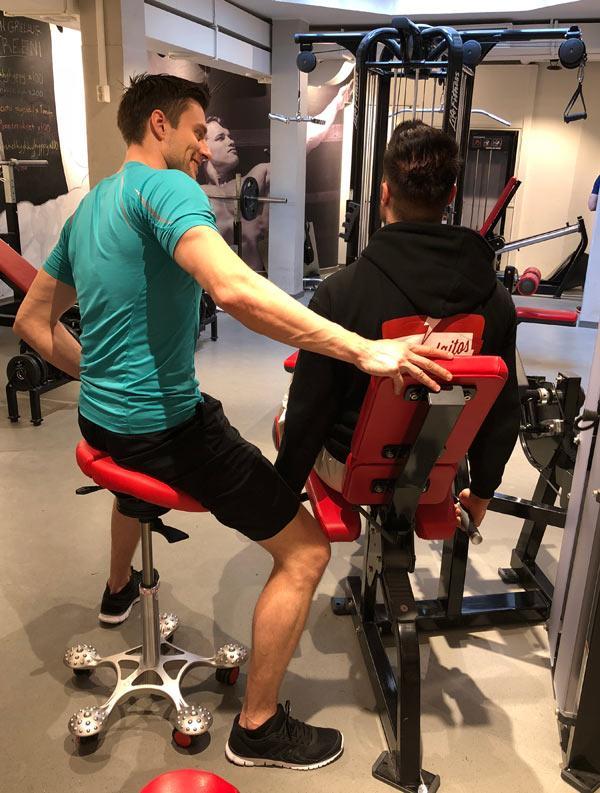Sitting and Prostate Health

Every sixth man in the western world gets prostate cancer. About one of the six dies of it. Vast majority of men (over 90 %) have enlarged prostates at the age of 60. Large number of men use medication that prevents prostate enlargement. Practically all senior men have slower urination because the prostate has grown. The urethra goes through the prostate. When the prostate grows the passage gets smaller and the urinating slows down.
So far there has not been any convincing evidence, or rational explanation or theory, about why the prostate grows and kills a lot of men. In physiology the interactions are surely very complex. Many factors have various effects and their precise interaction usually remains a mystery even to the best of scholars.
Now there is a new promising theory about what irritates the prostate: traditional sitting. This is very understandable and logical. When sitting on traditional chairs the weight of the upper body, which can be considerable, presses the pelvis. Also we sit for longer periods of time, and men are also heavier than before.
The process goes like this
- When men are sitting, the sitting bones (ischial tuberosities) sink in the padding, and the padding presses soft tissues (skin, fat, muscles) between the sitting bones through the pelvic opening into the lower pelvic area.
- A pressure field builds up in the lower pelvic area and the pressure spreads out in internal organs which include much more liquid than the body in average (67 %). We know that the pressure spreads out evenly in liquid.
- The increased pressure disturbs normal metabolism which, in time, cause dysfunctions and illnesses.
The rational and indirect proofs of the theory that sitting increases prostate problems
- Men who stand more and whose work is physical have 23 % less prostate cancer than office workers.
- About 49 % of all cancers of men in Europe concentrate in the region between the sacrum, pubic bone and sitting bones (in an area the capacity of which is about one litre) where men have the prostate, bladder, urethra, anus, rectum, and part of the colon. As much as 70 % of all those cancers occur in the prostate.
- Men who have prostate infection feel pain on all seats, but considerably less on a two-part saddle seat where the gap prevents pressure from building up inside the pelvis.
- There is a growing number of men, whose already enlarged prostates have shrunk back, even down to 10–11 g level, after they have used a two-part saddle chair with about 40 mm wide gap under the pelvic opening. A volunteer who had a test history of 1998–2013 had prostate sizes of 11 g (1998), 18 g (2002), 16 g (2009), and 10 g (2013). The last was verified in two separate measurements with manual and Doppler ultrasound methods. Also the urinary organs were proven to be quite healthy without any indication of malfunction. The prostate, however, showed signs of earlier overgrowth on one side. During 2010–2013 the person sat on a saddle chair with a wider gap (40 mm) than ordinary saddle chairs. Also the count of live semen in his sperm was particularly high (291 million /mm³ of sperm) while the average was 48 million among 19-year-old men in 2013.
- The prostate is very close to the skin, just round the edge of the pubic bone, and thus gets a lot of sitting pressure.
Many risk factors have been found, or suspected, to increase prostate cancer. Sitting is a very promising candidate to be the main risk. Before the studies show the right order of the risk factors, it is smart to try to avoid them all and thus decrease the probability of this very unpleasant illness.
The statements on the page are based on the following sources:
Michael Adams, Nikolai Bogduk, Kim Burton, Patricia Dolan: The Biomechanics of Back Pain
David A. Rubenstein, Wei Yin, Mary D. Frame: Biofluid Mechanics, an Introduction to Fluid Mechanics, Macrocirculation, and Microcirculation
Marcus J. Seibel, Simon P. Robins, John P. Bilezikian: Dynamics of Bone and Cartilage Metabolism, Principles and Clinical Applications
